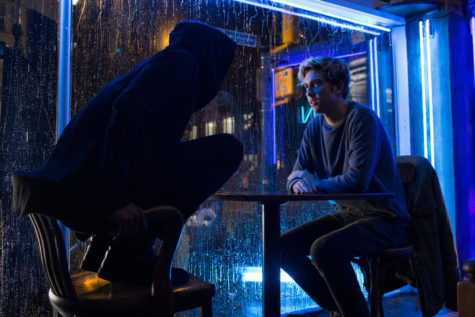Giving POC Meaningful Representation in the Media

Remember watching Jessie or Bunk’d? They were often considered “comfort shows,” as many Disney films are. Eyes that have been opened to normalized racism, stereotypes and bias, however, are beginning to re-analyze how often seemingly harmless films and shows like these inaccurately portray people of color.
The 2019 Hollywood Diversity Report reveals that people of color only made up a paltry 19.8
percent of lead film roles. When people of color do happen to obtain these roles, they are either extremely whitewashed and unre-
latable, or at the other end of the spectrum — extremely ethnically stereotypical.
In countless movies and TV shows, characters of color do not have their own identities with-
out revolving around the white lead. Clueless, a 2000s classic for instance, stars Cher Horowitz, whose best friend is Dionne Marie Davenport — a person of color. Dionne’s character serves one sole purpose only: diversifying the cast. Being one of the very few actors of color on set, viewers were unable to delve deeper into Dionne’s own character. Across many films that are known to be classics, it is evident that characters of color are used as an “accessory of diversity.”
Other than diversifying the cast, characters of color are almost always used as comedic relief.
Think Ravi and Zuri from Jessie or Tiffany and Jorge from Bunk’d: they embody racist and stereotypical caricatures of people of color, yet their scriptwriters are credited with making the audience crack up over insensitive jokes.
Ravi is seen as the weird Indian kid who is strangely attached to his pet reptile and Zuri has the aggressive, sassy and loud per-
sona that Black women are too often associated with. Tiffany has an unrealistically strict mother, feeding into the idea that all Asian moms are “tiger moms.” Jorge, the only Hispanic character in the show, is depicted as a liar and a
thief. These are just some named examples of how normalized these harmful stereotypes are. Disney has a huge impact on the entertainment industry, with about 355,000 viewers in 2020 alone. Since their audience is composed of mainly younger children, they can potentially enforce harmful stereotypes to an entire generation.
Paired with underdeveloped minds and lack of education on issues surrounding racism, stereotypes and bias, children are easily taught inaccurate portrayals of people of color on
television. Jiajia Zhang (III) explains, “It’s hard for kids to interpret what is accurate versus what is inaccurate. They may begin to associate everyone who looks like a certain character with the stereotype that [character] enforces.”
Current issues of racism, stereotypes and bias in the industry tie back to entertainment in history. When people of color were
not offered jobs as actors or other entertainers, white people were paid to act in place of them. This process led to extremely offensive and racist portrayals of people of color, such as blackface and yellowface.
Lack of diversity behind the scenes is one root of these inaccurate and offensive portrayals. BLS AP World History teacher Ms. Cheralyn Pinchem states, “If you’re writing a script, as you craft those words, you should have a diverse room of people who say, ‘Hey, I want the actor to say this,’ or ‘I want the actress to dress this way.’ If you don’t have representation around the table, some things that are inappropriate or stereotypical or just flat out offensive could get written, and nobody would check it.”
BLS’s own entertainment department team works proactively to avoid making the same mistakes as larger industries. Kasaan Kirby (III), member of BLS Theatre, says, “I believe that the BLS Theatre program does a great job of accurately portraying and
representing all minorities. One instance that I can support this with is the production of Pipeline by Dominique Morisseau. Pipe-
line is about a mother’s hopes and dreams to give her son a better future, while being in a divorce with his father. Majority of the cast were Black actors, and I feel like each of us portrayed the life of our character as who we thought they would be.”
Ms. Pinchem adds how important it is to accurately represent people of color in media and entertainment. “Everyone at sometime in their high school career [or] in their lifetime should feel celebrated. On the everyday would be ideal, but at least one time while you’re watching television, you should be like, ‘Oh, that made me feel good. I feel proud,’ versus, ‘Look at how we’re represented again. Here we go, here’s that stereotype, now I gotta go, amongst my group of friends and unpack that stereotype because now they’re gonna think that’s me.’”
The media and the entertainment industry should work to make people feel better about themselves. We need to celebrate the vast potential in each and every one of us, not ignore or slight it.


